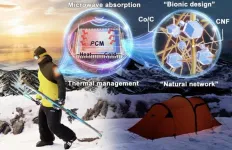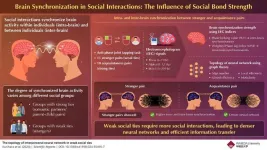New York, NY —The American Federation for Aging Research (AFAR) is pleased to announce the second cohort of the Hevolution/AFAR New Investigator Awards in Aging Biology and Geroscience Research, a grant program to enable early-career investigators with labs in the US and Canada to advance research projects in basic biology of aging, as well as geroscience projects that translate advances in basic research on aging biology from the laboratory to the clinic, paving the way for healthspan-expanding therapeutics and treatments. $6,750,000 will support eighteen investigators who have been selected to receive this three-year award of $375,000 (total):
Kevin Beier, PhD, Assistant Professor, University of California, Irvine
Do aging-related neuropathologies spread through neuronal synapses?
Alexander Bick, MD, PhD, Assistant Professor of Medicine, Vanderbilt University Medical Center
Identifying clonal hematopoiesis resiliency mechanisms
Caitlin Davis, PhD, Assistant Professor, Yale University
Spatiotemporal Rewiring of Lipid Metabolism in Aging Tissues
Jason DeFreitas, PhD, Professor of Exercise Science, Syracuse University
Mechanisms of Degradation across the Lifespan: The Role of Descending Tract Function on Age-Related Sensory-Motor Deficits
Luke Evans, PhD, Assistant Professor, University of Colorado, Boulder
Gene-Gene Interaction Associations with Frailty to Identify Core Genes of Aging and their Biological Context
Bhanu Ganesh, PhD, Assistant Professor, University of Texas Health Science Center Houston
Aging Together: The Role of The Gut Microbiota and Its Influence on Host Immunity
Jonathan Gootenberg, PhD, McGovern Fellow and Principal Investigator, Beth Israel Deaconess Medical Center/Harvard Medical School
Discovery and manipulation of transcription factors stem cell rejuvenation in aged bone-marrow
Sung Min Han, PhD, Assistant Professor, University of Florida
Exploring the Systemic Regulation of Organismal Longevity and Health through Individual Neuron Mitochondrial Stress
Dan Jane-wit, MD, PhD, Associate Professor, Yale School of Medicine
Complement Protein Aggregates in Age-Related Amyloidosis
Janine Kwapis, PhD, Assistant Professor of Biology and Paul Berg Early Career Chair in the Biological Sciences, Pennsylvania State University
Reversing an epigenetic mechanism that limits memory flexibility in old age
Sreemathi Logan, PhD, Assistant Professor, University of Oklahoma Health Sciences Center
Delineating senescence in the context of brain-adipose axis in aging
Payel Sen, PhD, Stadtman tenure-track investigator, National Institute on Aging, NIH
Targeting epigenetic mechanisms in progenitor cells for functional rejuvenation of whole organs
Simone Sidoli, PhD, Assistant Professor, Albert Einstein College of Medicine
The role of histone succinylation in exceptional longevity defined using single cell resolution
Rebecca Voorhees, PhD, Howard Hughes Medical Institute Freeman Hrabowski Scholar; Assistant Professor of Biology and Biological Engineering, California Institute of Technology
Inhibition of MTCH2 as a novel modality for ageing therapy
Siyuan Wang, PhD, Associate Professor, Yale University
Developing a high-content spatial transcriptomic screen method to discover novel regulators of cell-cell interaction in the native senescent microenvironment
Reyhan Westbrook, PhD, Assistant Professor, Johns Hopkins University
Leveraging Kynurenine Pathway Manipulation to Improve Metabolic Dysfunction and Extend Healthspan in Mice
Maxwell Wilson, PhD, Assistant Professor of Quantitative and Systems Biology, University of California
Santa Barbara
Unraveling Aging Mysteries through Optogenetic Dissection of ISR Dysregulation
Bokai Zhu, PhD, Assistant Professor, University of Pittsburgh
Rejuvenation of nuclear speckles to delay aging
Now in its second year, AFAR and Hevolution Foundation launched the New Investigator Awards in 2022 as a pilot initiative to support research projects in the basic biology of aging and geroscience—a research paradigm based on addressing the biology of aging and age-related diseases to promote healthy aging. In its inaugural cycle,18 awards were granted. In 2023, Hevolution expanded this program with an additional commitment of $16 million which will provide support for up to 36 investigators in Northern America in 2023 and 2024. AFAR anticipates that the application process for the third cohort will begin in fall 2024.
“The Hevolution/AFAR New Investigator Awards in Aging Biology and Geroscience are a vital catalyst to support the next generation of aging researchers. Nurturing this emerging talent is crucial for the future advancement of novel gerotherapeutics to extend healthspan, and is in line with our mission to provide grants and early-stage investments to incentivize independent research in the emerging field of healthspan science," shares Felipe Sierra, PhD, Chief Science Officer of Hevolution Foundation. “Our investment is a testament to our belief in the transformative potential of these early-career scientists, whose work is essential for pioneering new pathways to extend healthspan. Through this support, we’re funding vital projects while fostering the future of healthy aging science for the benefit of all."
The New Investigator Awardees are selected through AFAR's vigorous review process led by a committee of accomplished scientists representing a wide range of expertise in biomedical research on aging; Gordon Lithgow, PhD, Professor at the Buck Institute for Research on Aging, serves as the selection committee Chair.
"For more than four decades, AFAR has supported the most promising and talented emerging investigators in the basic biology of aging. Our efforts have been a catalyst for advancing the understanding of basic aging processes. This understanding in turn has shaped the foundation of geroscience that these New Investigator Awardees can now build upon," notes Steven N. Austad, PhD, Senior Scientific Director, AFAR. "AFAR eagerly anticipates the impact that this second cohort of New Investigators will make and is grateful for Hevolution Foundation’s support."
For more information on the Hevolution/AFAR New Investigator Awards in Aging Biology and Geroscience Research and all AFAR grant programs, please visit http://www.afar.org/funding-opportunities.
###
About AFAR
The American Federation for Aging Research (AFAR) is a national non-profit organization that supports and advances pioneering biomedical research that is revolutionizing how we live healthier and longer. For more than four decades, AFAR has served as the field’s talent incubator, providing nearly $200 million to some 4,400 investigators at premier research institutions to date—and growing. Through its 2023 grant programs, AFAR provided approximately $12,500,000 to more than 60 investigators. A trusted leader and strategist, AFAR also works with public and private funders to steer high quality grant programs and interdisciplinary research networks. AFAR-funded researchers are finding that modifying basic cellular processes can delay—or even prevent—many chronic diseases, often at the same time. They are discovering that it is never too late—or too early—to improve health. This groundbreaking science is paving the way for innovative new therapies that promise to improve and extend our quality of life—at any age. Learn more at afar.org.
About Hevolution Foundation
Founded on the belief that every person has the right to live a longer, healthier life, Hevolution Foundation is a global catalyst, collaborator, and convener on a mission to drive efforts to extend healthspan and understand the biological processes behind aging. As a global nonprofit organization headquartered in Riyadh with a North American hub and an annual budget of up to $1 billion, Hevolution is supporting a cutting-edge, global ecosystem of talent to propel aging and geroscience research forward and achieve medical breakthroughs. With a focus on aging as a treatable process, Hevolution aims to increase the number of aging-related treatments on the market, compress the timeline of drug development, and increase accessibility to therapeutics that extend healthy lifespan, also known as healthspan. To date, Hevolution has committed $250 million to drive scientific discoveries to make aging healthier for humanity. Connect with Hevolution Foundation on LinkedIn, X (formerly Twitter), and at hevolution.com
END







